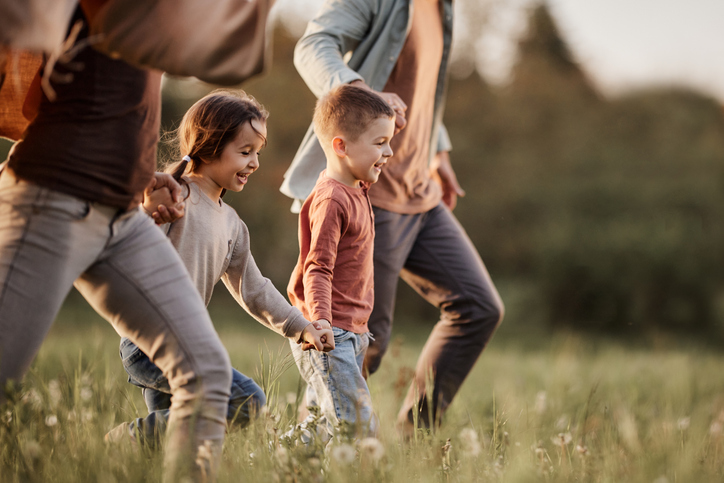Spring is here, and it’s the perfect season for stepping outdoors, breathing in the fresh air, and discovering the wonders of nature with your kids. As a dad, I’ve found that there’s something magical about using the world around us as a classroom. Watching their eyes light up when they spot a bird for the first time or discovering how a seed grows into a plant—it’s these little moments that make parenting so rewarding.
If you’re like me, you’re always looking for fun, hands-on ways to connect with your kids while also sneaking in a littleeducation. Lucky for us, spring is packed with opportunities to teach kids about the environment, animals, plants, and ecosystems in ways that are exciting and memorable. Here are some of the adventures my kids and I love, and ones you can try with your family this season.
Go on a Nature Scavenger Hunt
Kids love a good treasure hunt, and nature is full of treasures waiting to be discovered. Create a simple list of things to find, like a red leaf, a pine cone, a bird’s nest, or even something as small as a feather. Tailor the list to your kids’ ages—simpler for younger ones, more challenging for older kids.
On our last hunt, my son was thrilled to find an oak tree and figure out which leaves matched its description. Along the way, we talked about the importance of trees in providing oxygen and habitat for animals. By the end of the walk, it wasn’t just about ticking boxes off a list, but about building awareness of the world around them.
Plant a Garden Together
There’s no better way to teach kids about life cycles than by starting a small garden. It doesn’t have to be elaborate—a few pots on the porch or a small patch in the backyard will do. My daughter had a blast helping me pick out seeds and learning how each one grows differently.
As the plants sprout and grow, it’s an ongoing science lesson. You can explain photosynthesis (in simple terms), talk about the role of water, sunlight, and soil, and even discuss pollinators like bees and butterflies. Plus, there’s an added sense of accomplishment when they get to harvest their own vegetables or see flowers bloom.
Explore Local Wildlife
Spring is a busy time for animals, which makes it the best season for wildlife spotting. Grab a pair of binoculars and head to a park, nature reserve, or even your backyard. Birds are especially active in spring, building nests and feeding their young, and kids love learning to identify them by their colors or calls.
I remember one rainy afternoon when we spotted a family of ducks by a pond, and my kids asked all sorts of questions about ducklings and migration. It was the perfect chance to talk about ecosystems and how different species interact. If you’re lucky, you might also spot frogs, turtles, or squirrels. Just remind the kids to observe from a distance and be respectful of wildlife.
Do a Stream or Pond Study
If you’ve got a nearby pond, stream, or lake, it’s a goldmine for hands-on learning. Bring a small net and clear container, and let the kids scoop up water to see what’s living there. You might find tadpoles, small fish, or water bugs.
My son was amazed to learn that tadpoles eventually turn into frogs, and it sparked a whole conversation about metamorphosis. For older kids, you can take it a step further by talking about water quality and the importance of clean ecosystems. Throw in some fun facts (did you know frogs can breathe through their skin?) and you’ve got a mini science lesson they’ll always remember.
Build a Birdhouse or Bug Hotel
If you’re the hands-on type, building a birdhouse or bug hotel is a fantastic way to engage your kids while teaching them about animal habitats. We made a simple bug hotel last year using an old wooden box, filling it with sticks, pinecones, and hollow bamboo for insects to crawl into.
Not only did my kids love assembling it, but they also got excited every time they saw a bee or beetle checking out their creation. These projects are great for showing kids how small actions can help the environment. Plus, it’s a fun way to spend an afternoon together, especially if you let them decorate the finished product.
Take a Nighttime Nature Walk
Spring nights are alive with sounds, from chirping crickets to croaking frogs. One of the coolest experiences I’ve shared with my kids is a nighttime walk in a nearby park. Armed with flashlights, we explored a completely different side of nature.
The highlight? Hearing owls hoot in the distance and spotting fireflies lighting up the dark. It’s a perfect moment to talk about nocturnal creatures and how they’ve adapted to life in the dark. Night walks also have this calming effect, making it a great way to wind down after a busy day.
Try Cloud Spotting and Weather Watching
Spring weather can be unpredictable, which makes it a great time to teach kids about clouds and weather patterns. Lie down on a blanket, look up at the sky, and identify the different types of clouds.
One day, my kids and I spent an hour spotting shapes in the clouds while talking about how they’re formed and what they tell us about the weather. On stormy days, we’ll track lightning from our window and discuss how rain helps plants grow.It’s science in action, and kids love it because they can see the effects right in front of them.
Create Nature Art
Let’s face it—kids love getting creative, and nature provides endless inspiration. Collect leaves, flowers, and sticks to make collages, press flowers for bookmarks, or even try your hand at rock painting. My daughter recently made a “leaf crown” by threading leaves onto a piece of string, and it’s become her favorite outdoor accessory.
Through art, you can teach kids about different plant species, textures, and colors. It also helps them see the beauty of nature in a whole new way. Bonus: This is a great activity for rainy or lazy days when you still want to incorporate a bit of nature into their routine.
Teach Conservation Through Action
Finally, one of the most important lessons we can teach our kids is how to care for the planet. Spring is a great time to start small but meaningful conservation projects. Go on a litter-picking walk, start a compost bin, or plant native wildflowers to support pollinators.
Last spring, my kids and I spent an afternoon cleaning up a local trail, and it sparked a conversation about why reducing waste is so important. It’s amazing to see how quickly they pick up on these values and want to make a difference themselves.
Final Thoughts
Spring is a season of growth, renewal, and endless opportunities for learning. As a dad, I’ve realized that some of the best lessons don’t come from books—they come from experiences. Whether you’re exploring a park, planting a garden, or just looking up at the sky, these adventures aren’t just about teaching your kids; they’re about connecting with them and creating memories that will last a lifetime.
So grab your sneakers, pack some snacks, and head outside. The world is waiting to be explored, and I promise you won’t regret the time spent adventuring with your little ones. After all, there’s no better classroom than nature itself.


